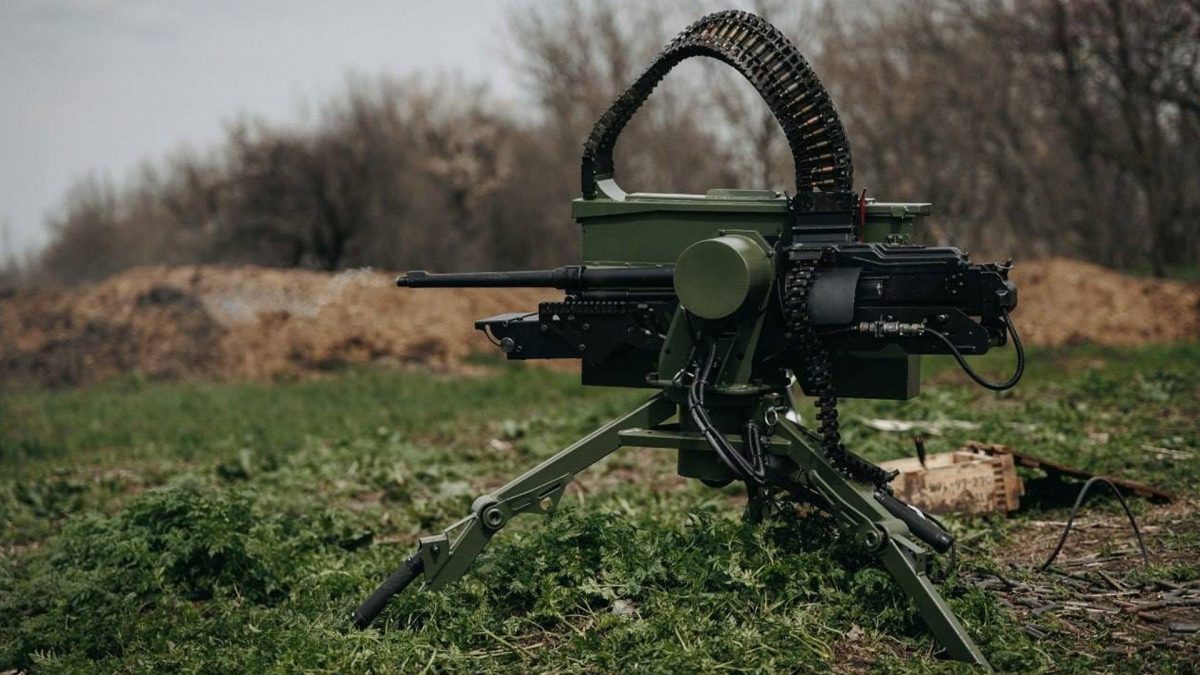The US Army is looking into a new, cutting-edge solution to tackle the escalating threat of drone attacks, and it’s not what you’d expect. Enter the Bullfrog, an AI-powered, precision-focused machine gun that could revolutionise how American forces defend against these increasingly common unmanned aerial threats, as per a report by the Wired.
With drones often being a low-cost yet lethal danger to troops stationed abroad, this AI-driven system is being considered as a game-changer for military defences.
This sleek new tech was showcased at the Technology Readiness Experimentation (T-REX) event, where the Department of Defense gave it a serious test run.
Developed by Allen Control Systems (ACS), the Bullfrog is a robotic gun system that combines a 7.62-mm M240 machine gun with advanced sensors and proprietary AI. Its job? To track and take down drones with accuracy that puts even the best sharpshooters to shame. Imagine a robotic turret locking onto small, zippy drones and downing them with just a couple of well-aimed shots — that’s the power the Bullfrog promises.
Pentagon officials seemed pretty impressed with the Bullfrog’s performance, highlighting how well it performed during trials. This isn’t just about bragging rights; it’s a potentially vital shift in how the US military could counter drone threats on the battlefield.
If adopted, this would mark the first known lethal autonomous weapon in the Pentagon’s arsenal, though it would still come with a human operator to pull the trigger. The gun may be able to track and target autonomously, but firing still requires human approval — at least for now. ACS has made it clear that full autonomy is on the table if the US military ever wants to go in that direction, the Wired reported.
Shooting down drones isn’t as easy as it sounds, especially since they’re small, quick, and hard to hit. The US military has been exploring all kinds of options to make traditional firearms more effective, from developing new types of ammunition to attaching jammers that scramble drones’ signals.
Impact Shorts
More ShortsEven training has evolved to make counter-drone tactics a routine skill for soldiers. But ACS has taken a different approach. Rather than relying on humans or modifying current weapons, the company is betting on AI and robotics to do the heavy lifting.
ACS cofounder and CEO Steve Simoni, who has a background as a Navy engineer, saw an opportunity for a smarter, more robotic approach to drone defence. The widespread use of drones during the Russia-Ukraine conflict demonstrated just how crucial this kind of tech could be, with Ukrainian soldiers sometimes resorting to firing AK-47s skyward in desperation. Simoni and his team figured there had to be a more efficient way, and so the Bullfrog was born. The system is capable of downing small drones at distances of up to 200 yards with pinpoint accuracy, something that would be nearly impossible for a human to achieve.
Gun turrets are nothing new, of course. The Navy has used the Phalanx CIWS for years to defend ships from missile threats, and remotely operated turrets are common on many combat vehicles. Israel has also used AI-powered guns in a bid to maintain its control over the West Bank.
However these existing systems are usually huge and cumbersome. The Bullfrog, on the other hand, is compact, weighing under 400 pounds, making it ideal for more agile platforms like tactical vehicles. Instead of spraying bullets in a frantic burst, this system focuses on precision, saving ammo and creating an efficient, layered defence network for troops.
The autonomy of the Bullfrog does stir up some ethical questions, though. US Military planners are always wary about letting machines make life-or-death decisions. While a human currently oversees the Bullfrog’s operations to ensure there are no rogue attacks, the potential for full autonomy exists. The debate about whether the US military should hand over lethal capabilities to machines is far from settled, but for now, the human-in-the-loop policy remains a priority.
The Bullfrog’s debut at T-REX couldn’t have come at a better time. The Pentagon has been heavily investing in counter-drone technologies under its Replicator initiative. This programme is focused on rapidly developing affordable and effective defences as drone threats become more sophisticated and widespread.
Military leaders, especially in the Middle East, have been raising alarms about the ease with which commercial drones can be weaponised, making them a top security concern. A tragic reminder of this came earlier in the year when a drone attack on a US outpost in Jordan killed three American service members, underscoring the urgent need for better defences.
The challenge lies in finding cost-effective solutions. Many existing methods, such as missile defence systems or directed energy weapons, are either too expensive or still experimental. That’s where the Bullfrog stands out.
By using standard bullets rather than high-cost munitions, it could offer a more budget-friendly way to defend against drones. ACS is confident that their AI-driven precision will make the system highly efficient without the logistical headaches of laser or microwave technology.
ACS isn’t stopping here. The company has ambitious plans to keep improving the Bullfrog, aiming for even greater range and smarter targeting capabilities. The ultimate vision is to create a network of autonomous turrets that can coordinate fire and protect moving convoys, even in challenging conditions like bumpy roads. It’s a glimpse into what future warfare might look like, where robots equipped with advanced AI handle the dirty work while human operators focus on strategic decisions.
Despite the excitement surrounding the Bullfrog and the potential for a new era of autonomous weapons, sceptics continue to voice concerns about the unpredictability of AI systems. The idea of robots making split-second decisions in a chaotic battlefield doesn’t sit well with everyone, and the implications of fully autonomous weapons are still a grey area.
But as drone threats become more sophisticated and frequent, the US military’s interest in these robotic defences is only set to grow. If the Bullfrog lives up to its promises, it could be a significant player in shaping the future of battlefield tech.


)

)
)
)
)
)
)
)
)



